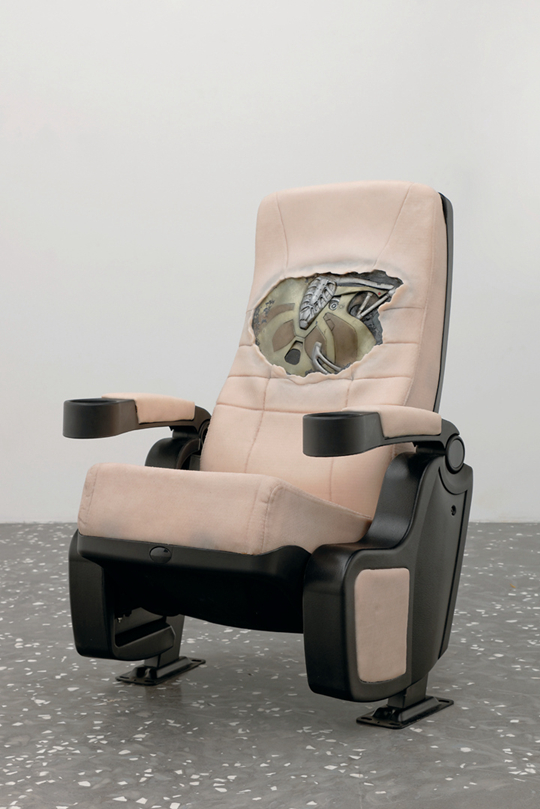MASSAGE CHAIRS
| July 13, 2015 | Post In 2015年6月号

Courtesy the artist and New Galerie, Paris
Comfort is a high priority, though it’s easy to parody. Many artists, in dialogue with the generic aesthetic of the contemporary, take the experience of everyday life and the bland, tranquil surfaces of the anesthetized metropolis as an archive to mine for symbolic value. Like existence in the developed world in general, being massaged is sort of boring but feels pretty good, a comforting and generic techne; the massage chair, like a surrogate mechanical mother, wraps its subject in an embrace of slow, repetitive buzzing. Usually, when artists address the massage chair, it becomes a tool with which to excavate the inner workings of the social apparatus, redolent of whirring gears and sharp blades.

Courtesy the artist and New Galerie, Paris
Dora Budor’s Mental Parasite Retreat alludes to the unknown terror in the heart of the machine, or perhaps to the violence masked by the corporate aesthetic. Protruding from a cinema seat is a metallic plate like something out of Alien (more accurately, it is the chest prosthetic used by Bruce Willis in Surrogates); if the fear of the 1980s was of the biological enemy lying within the body, of the virus and the visceral other, the protrusion of sharp axles of machinery from underneath a boring grey sheen is a more contemporary anxiety. Beneath the smooth, broad surfaces of this perfectly functioning machine (the mode of its function a mystery) could lie any number of strange and frightening apparatuses; what work they do on us, we don’t quite know. Yang Zhenzhong’s 2003 Massage Chairs correlates to Budor’s work as, perhaps, the Chinese economic apparatus does to the American one; if Budor shows the dangerous interior of the machine, Yang strips away exterior spectacle entirely, leaving only skeleton-chairs emitting a ghostly whine.

